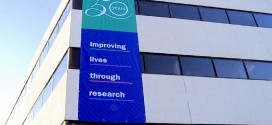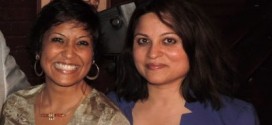By Devika Koppikar
In Sterling, Virginia, a Sikh family receives a letter threatening to be “shot dead” if they don’t leave the country. On a routine evening stroll, two elderly Sikh men are murdered in Elk Grove, California. Kentucky Senator David Williams criticized Govenor Steve Beshear for attending a Hindu groundbreaking prayer. And a major-party candidate for U.S. President states that Muslims would have to prove their loyalty to the constitution to be considered for Cabinet posts.

These are just some of hundreds of hate-violence incidences and xenophobic rhetoric that are surging at the rate of 40 percent per year since 2011, a report by the South Asians Americans Leading Together (SAALT) http://saalt.org/ has found. The nonprofit advocacy group released the report, Under Suspicion, Under Attack at a Capitol Hill press conference on Sept. 9th.
“In terms of a historical perspective, the report’s findings are not surprising,” said Deepa Iyer, former executive director of SAALT. “In the years since 2010, we have seen a rise in anti-Muslim sentiments–from the Park 51 community center controversy to the anti-mosque movement. We’ve also seen upticks in hate violence, including the 2012 massacre at the Oak Creek Gurdwara outside of Milwaukee. It is more important now than ever to be vigilant about pushing back against xenophobic rhetoric and policies.”
The 86-page report documents over 150 incidents of hate violence and xenophobic rhetoric by political figures that occurred nationwide from January 2011 through April 2014. Hate violence ‘hot spots’ included the New York City/New Jersey metropolitan area, Chicago and its outlying suburbs and Southern and Northern California.
“Unfortunately, the incidences are just the tip of the iceberg,” said current SAALT Executive Director Suman Raghunathan. “Many times, people don’t report the incidences because they are afraid that they’d draw more attention.”
Raghunathan said that what stood out in the report was the dramatic increase in political rhetoric targeting South Asian, Muslim, Sikh, Hindu, Middle Eastern and Arab American communities. While more than 90 percent of xenophobic political rhetoric noted in the report comprised of anti-Muslim sentiments, these created a hostile climate for anyone perceived as a follower of the Islamic faith.
“Anti-Muslim comments then make the targeted person or group of people seem as though they are disloyal to the United States,” said Raghunathan. “When government officials or political candidates make such comments, it poisons the climate and makes all of us look ‘suspicious.’”
The report noted that when an elected official makes xenophobic comments, it sends the message that such comments are acceptable and in some cases, may be interpreted as the government condoning violence against targeted groups.
For example, the report cites a Feb. 2011 California incident involving a homeless/domestic violence fundraiser hosted by the Islamic Circle of North America Relief USA (ICNA). During the event, a local councilwoman Deborah Pauly, participated and spoke at a rally protesting the charity fundraiser. At the rally, held outside the venue, participants shouted at children entering the event by calling them “terrorists” and saying “help these terrorists to an early meeting in paradise.”
In addition to documenting specific incidences, the report also makes recommendations for the local, state and federal government to adopt, while suggesting action items for community groups to pursue.
“This report not only highlights the problems facing our communities, it points to ‘better practices’ as models for coalition-building and organizing,” said Fahd Ahmed, the Acting Director of DRUM – South Asian Organizing Center. “For example, New York City groups united across lines of race, ethnicity, national origin, and religion to pass the Community Safety Act in 2013. We now have a framework to hold the NYPD accountable for their discriminatory practices, which sow distrust of law enforcement and enshrine profiling. We can do better, and we must.”
Raghunathan said that SAALT is advocating for the creation of the National Task Force to Prevent Hate Violence. The task force would implement preventative measures and response protocols on hate-violence incidents. The task force would also facilitate community-level infrastructure for victims and families to report incidences to.
Linda Sarsour, Senior Strategist for the Take on Hate Campaign and Executive Director of the Arab American Association of New York, who took part in the Sept. 9th release of the report said, “Our communities have endured a sustained and even escalating backlash after 9/11, crystallized by hate violence. I myself was the victim of a hate violence attack just last week near my office in Brooklyn, NY. Enough is enough. That’s why we started the Take on Hate Campaign (which) uses education, media, and coalition building in an effort to challenge discrimination and bigotry and move us closer to a nation that upholds equality and dignity for all.”
 Asian Fortune Your source for all things Asian American
Asian Fortune Your source for all things Asian American


